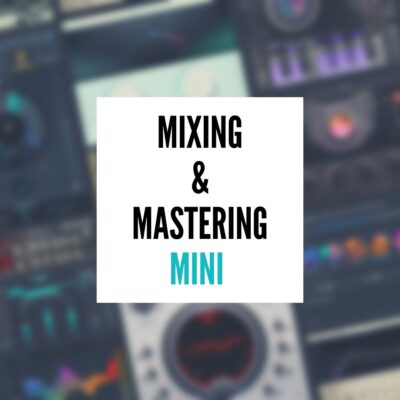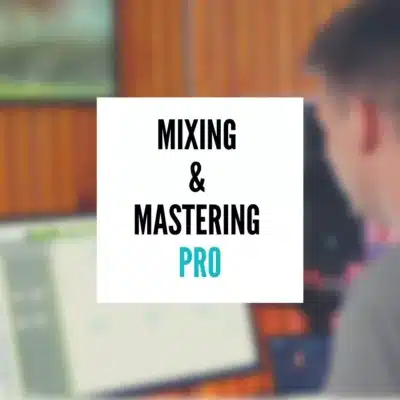Acustica Audio Plugins are some of my favorite plugins to use for mastering. They actually sample the hardware they are emulating, so you get a real authentic sound like you were running your music through the hardware itself. In my latest video, “Mastering With Acustica Plugins,” I take my viewers through a detailed process of mastering a song using only Acustica Audio Plugins. Here’s a breakdown of how I achieved a polished, professional sound.
Understanding the Objective
The Song and Goal
The song I chose for this tutorial is by the talented Trip Carter. My objective was clear: to enhance the mix and bring it to its full potential using Acustica’s powerful plugins. Mastering is not just about making a song louder; it’s about adding depth, clarity, and ensuring that the track sounds great on any system.
The Tools: Acustica Audio Plugins
Selecting the Right Plugins
For this project, I focused on three specific Acustica plugins:
- Coral Bax EQ: This free plugin is excellent for filtering and shaping the overall tone of the track. It’s subtle yet effective in enhancing specific frequencies.
- Azure2: I used this in MS mode to add airiness and sparkle to the mix, especially to make the vocals stand out more.
- Howie Weinberg Mastering Console: The final touch was added using this plugin, aiming for an overall level of around -9 LUFS, ensuring the track isn’t over-compressed but still has the desired loudness.
The Mastering Process
Step-by-Step Enhancement
Initial Assessment
When I first sat down with Trip Carter’s track, my initial task was to listen and identify improvement areas. The mix was already in a good place – it had a solid foundation, clear vocals, and a well-defined rhythm section. However, as a mastering engineer, my role is to take what’s good and elevate it to something great. So, I tuned in with a critical ear, looking for those subtle nuances and potential enhancements that could take the track to the next level. Whether it was tweaking the balance, enhancing the clarity, or adjusting the overall dynamics, I was ready to dive in and bring out the best in an already impressive mix.

Coral Bax EQ
Using Coral Bax EQ
In my work with the Coral Bax EQ, my approach was centered on subtle yet effective light filtering. It was crucial for me to maintain the integrity of the sub-low end, as removing too much could detract from the track’s foundational depth. My strategy involved a slight boost around 84 Hz, which was aimed at enhancing the kick drum, giving it a more pronounced and impactful presence in the mix. Additionally, I implemented a shelf at 4.8 kHz, a deliberate move to elevate the vocals. This adjustment was key in adding clarity and prominence to the vocal track, ensuring it cut through the mix with just the right amount of brightness and presence.
Applying Azure2
Moving on to the Azure2, my focus shifted towards enhancing the high-frequency spectrum of the track. The goal here was to infuse a sense of airiness and clarity, particularly in the upper ranges, which can really make a track sparkle. To achieve this, I employed a technique where I unlinked the mid and side channels. This allowed me to delicately boost the mid frequencies, a strategic move that brought the vocals more into the spotlight. By doing so, the vocals gained a more pronounced presence, standing out more distinctly against the backdrop of the instrumental layers. This step was crucial in achieving a well-balanced mix where every element, especially the vocals, could shine in its own right.
Final Touch with Howie Weinberg Mastering Console
I paid special attention to the limiter settings when using the Howie Weinberg Mastering Console. The limiter is a powerful tool in mastering, helping to control the peaks while maintaining the overall dynamic range of the track. I carefully adjusted the limiter to catch only the necessary peaks without squashing the life out of the mix. This balance is crucial for maintaining the energy and dynamics of the original recording.
Oversampling was another critical aspect I focused on. By adjusting the oversampling settings, I aimed to enhance the audio quality, ensuring that the final output was free from unwanted artifacts and digital harshness. This process helps in preserving the track’s clarity and detail, especially in the higher frequency ranges.
Achieving the Right Level
One of the goals in mastering is to achieve a consistent and competitive loudness level, suitable for various playback systems and streaming platforms. I aimed for an overall level of around -9 LUFS, a sweet spot that ensures the track is loud enough to stand up against other commercial releases while retaining its dynamic range. This level of loudness is particularly crucial in today’s music industry, where the loudness war often tempts engineers to push levels too high, at the expense of sonic quality.
Respecting the Track’s Dynamics
Throughout this final step, my guiding principle was to respect the track’s inherent dynamics. Every adjustment, whether it was with the limiter, oversampling, or the overall level, was made with the intention of enhancing the track’s natural qualities, not overpowering them. The goal was to ensure that the final mastered track sounded polished, balanced, and ready for any listening environment, while still preserving the artist’s original vision and the mix’s dynamic feel.
Conclusion: The Impact of Mastering
Before and After
The difference between the pre-mastered and mastered track was night and day. The final version had more shine, better width, and the vocals were more pronounced. It’s incredible how subtle changes can significantly impact the overall sound.
Wrapping Up
Mastering is an art, and with the right tools, you can turn a good mix into a masterpiece. I hope my video and this blog post help you understand the process better and encourage you to experiment with your tracks. If you need professional mixing or mastering services, feel free to reach out to me at mixandmastermysong.com. Happy mastering!





